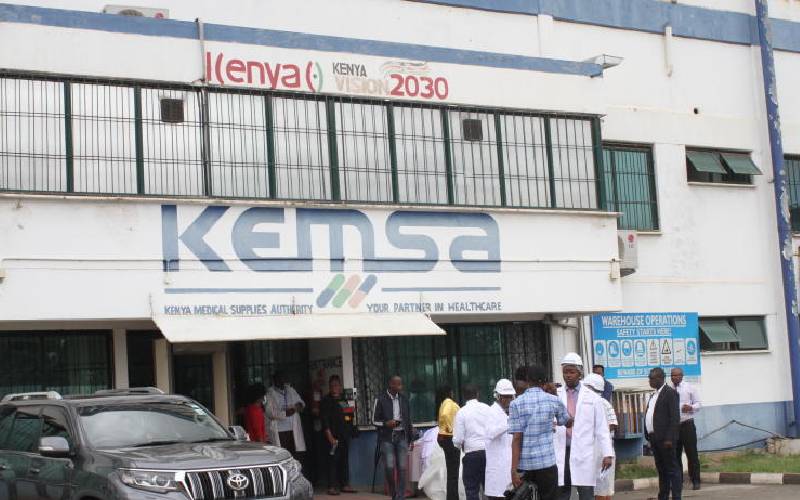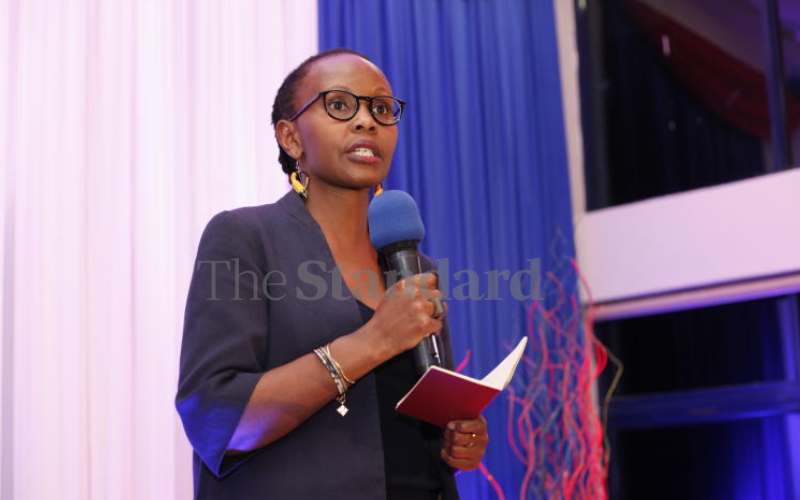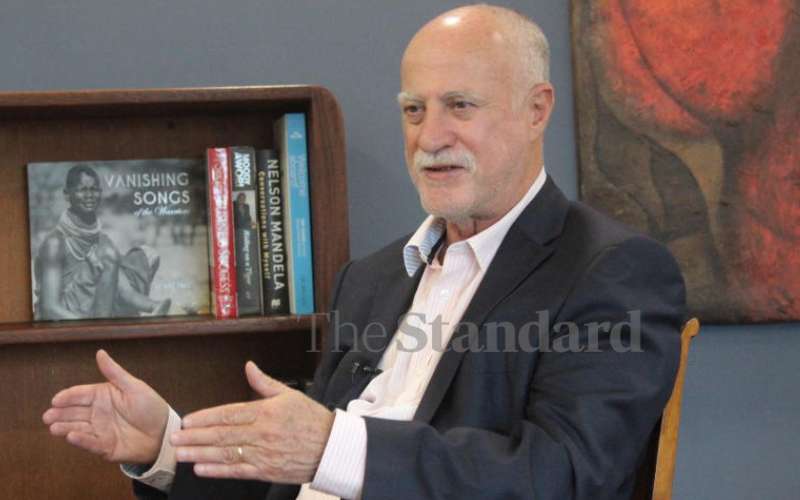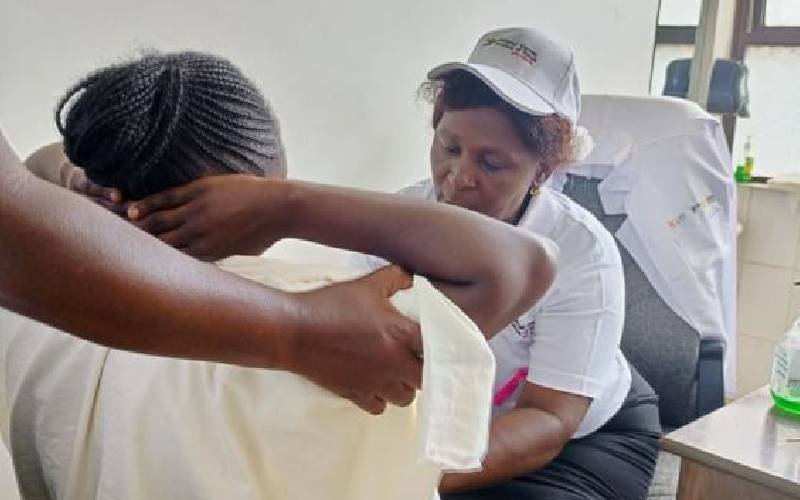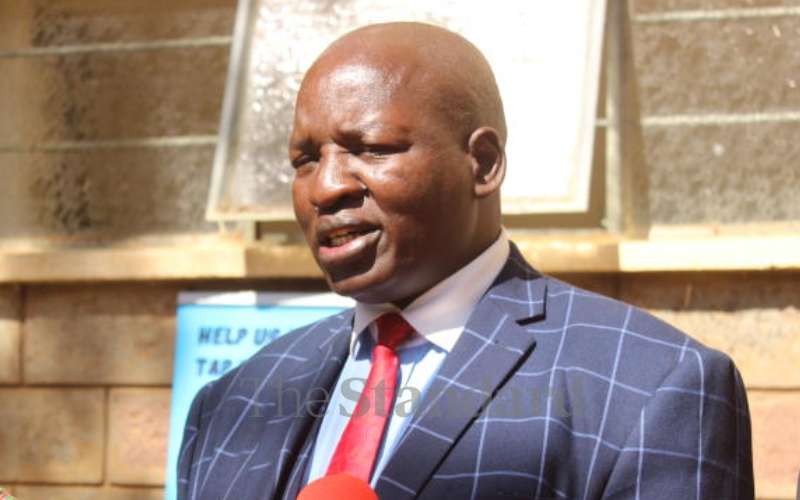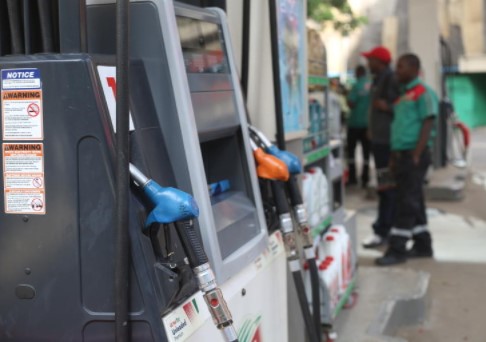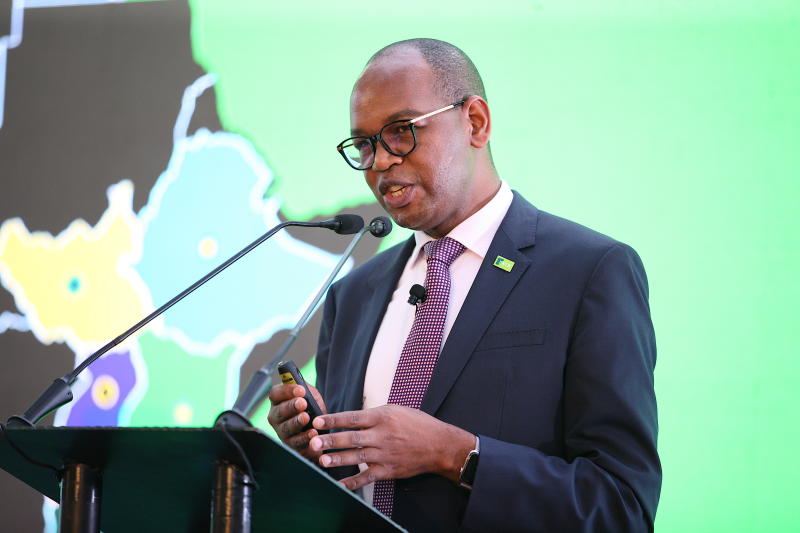
President Uhuru Kenyatta presents the trophy and certificate for The Best Financial Institution Other Than Bank to The Kenya Industrial Estate (KIE) Board chairman Mugambi Imanyara. [Jenipher Wachie, Standard]
Small is the new big thing for borrowers. They love it best when it is served fast and digital lenders know this.
It is this understanding that has seen digital lenders, many of them backed by foreign financiers, eat microfinance banks’ lunch. Too much that many microfinance banks are facing an existential threat.
And large banks are too joining the lunch table, rolling out super apps that have changed banking - from visiting branches to pressing buttons on their phones.
They include M-Shwari, KCB M-Pesa, Fuliza - an overdraft facility among others.
For many customers, it is not about the price. It is about accessibility. They want a financial institution that can fulfil their need now - tomorrow has become a century late.
Once seen as an attractive stop for borrowers seeking small loans and savers chasing high returns, micro-financiers are now on the edge. Losses are piling. Capital is diminishing.
It is six years since the 14 Central Bank of Kenya (CBK) regulated microfinance banks returned a combined profit. And it is not getting any better.
Micro-financiers are losing customers. Deposits are not coming in as much as they would have wanted. Their loan book is shrinking and their competitors — digital lenders and large banks — are the gainers.
The microfinance banks’ pre-tax losses more than doubled to hit Sh2.4 billion in the 12 months ended June 2021, worsening their woes as large banks and digital lenders continue to raid their turf.
The 14 micro-financiers had returned the Sh1 billion loss in the 12 months to June last year. The latest loss, therefore, marks the sixth straight year of losses for the micro-financiers.
They last posted a combined profit Sh489 million in the financial year ended June 2015.
The small lenders last year witnessed low uptake of credit, a high level of loan defaults and a decrease in interest income. Loan defaults increased by 32 per cent to Sh13 billion.
Out of the 14 microfinanciers, three hold community microfinance bank licenses, while 11 have nationwide licences.
Micro-lenders have been dragging their feet on innovations, with CBK data showing only three of them have agency banking since its inception a decade ago.
Yet customers have overgrown agency banking and want everything done on their smartphones. Without this capability, micro-financiers are struggling.
Last year saw the micro-financiers shut four branches, discontinue 32 marketing offices and part ways with 1,300 agents in what could further weaken growth prospects.
Even in the face of Covid-19 disruptions that saw many businesses retool their models to fit the new world, micro-financiers lagged behind on accelerating their digital strategies.
CBK says while 56 per cent of the banks innovated a product specialised to curb the effects of coronavirus, only 29 per cent of micro-financiers reacted.
And digital lenders such as Zenka, Oye, Sotiwa, Okolewa, Branch and Tala have complicated the equation for micro-lenders further. They are taking micro-loans at the doorstep of borrowers at a much faster pace.
Digital Lenders Association of Kenya (DLAK) Chairperson Kevin Mutiso says they are responding to a need that had been left out and almost considered as not worth lending to.
“People are looking for small loans to invest in businesses, invest in themselves through education and solve emergencies. And that informs the structure of our products,” said Mr Mutiso.
For instance, Mutiso said the digital loans, currently averaging between Sh1 billion and Sh2 billion monthly, are popular when schools are either closing or opening.
“What moves Kenya and the borrowing habits we see is the schools' calendar. Expenses rise when children are at home or going back to school. That is when we see our lending hitting peaks,” said Mutiso.
While this is a big market, microfinance banks can only watch from a distance. Without good digital apps, instant lending is still a mirage.
The few micro-lenders that have digital applications have not managed to win many customers, thanks to the many charges.
Micro-lenders such as Faulu Microfinance Bank charge customers to check balance, buy airtime or mini-statements, making the apps unpopular among the price-sensitive customers.
Yet customers’ allure for under-one-roof financial services providers is growing. Firms that can offer consumption loans as well as development loans, teach something about saving and lifestyle are now on top of the mind for customers.
This requires money. And large banks such as KCB, Cooperative Bank, Equity and NCBA have it — plus firm financial muscles and brand equity.
The cutthroat competition has been intensified by the many digital lenders who, together with banks are now eating microfinance banks’ lunches.
The number of active deposit and loan accounts for micro-financiers last year dropped to over a decade low as Covid-19 worsened the already dire situation.
The microfinance banks last year lost 396,800 or 37 per cent of their active deposit accounts, drifting far apart from the peak of 2013 when they held 1.946 million accounts.
The fall in deposit accounts also came in the period that active loan accounts fell by 46,900 or 17.8 per cent to 219,400 — the lowest in over eleven years. They had about 600,000 loan accounts 11 years ago.
The loan book last year shrunk five per cent to Sh44.18 billion, meaning that the 14 micro-financiers have an average loan book of Sh3.16 billion.
Reduced loan and deposit accounts as well as the mounting losses have seen their core capital cut by nearly half from Sh10.4 billion in 2016 to Sh5.49 billion at the end of last year.
While microfinance banks are supposed to be a natural pick for micro, small and medium-sized enterprises (MSMEs), the reality is far from this.
Of the Sh638 billion outstanding micro small and medium enterprises (MSME) loan balance as at end of December last year, commercial banks had lent Sh605 billion or 95 per cent, while microfinance banks lent Sh33 billion – equivalent to five per cent.
This is despite MSME deposits in microfinance banks amounting to Sh25.74 billion or 52.2 per cent of overall deposits held by microfinance banks.
Compared to 2017, this figure has also dropped. MSME deposits were in 2017 accounting for 72.5 per cent of total deposits in microfinance banks.
The contrast means the micro-lenders are not attracting deposits from small entities as fast as they used to.
“The decline in the proportion of MSME deposits to overall deposits may be attributed to a proportionately larger increase in non-MSME deposits than in MSME deposits during the review period,” says CBK.
CBK says commercial banks have realised that venturing into the markets they deem risky — such as MSME lending — is made much easier by providing customer-centric products.
Last year, commercial banks created various products for unique MSME segments such as women, farmers and suppliers.
To turn the tables on the large banks and the aggressive mobile-based lenders, microfinance banks need money — for innovations, lending and marketing.
And so many of them including SMEP Microfinance Bank and Choice Microfinance Bank are back to the market in search of fresh capital.
The current shareholders have seen losses wipe their investment and require a special motivation to invest in again.
Microfinance banks' return on shareholders' equity ratio — a measure of how much money is returned to the owners as a percentage of the money they have invested in a business — stood at negative 28 per cent last year.
 The Standard Group Plc is a multi-media organization with investments in media platforms spanning newspaper print
operations, television, radio broadcasting, digital and online services. The Standard Group is recognized as a
leading multi-media house in Kenya with a key influence in matters of national and international interest.
The Standard Group Plc is a multi-media organization with investments in media platforms spanning newspaper print
operations, television, radio broadcasting, digital and online services. The Standard Group is recognized as a
leading multi-media house in Kenya with a key influence in matters of national and international interest.

